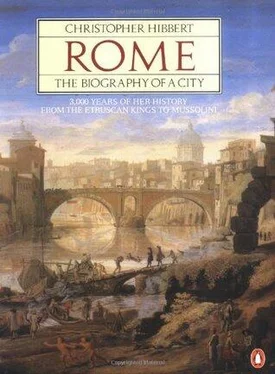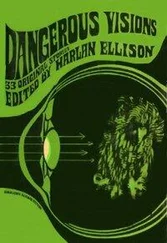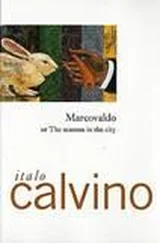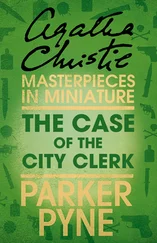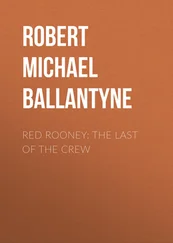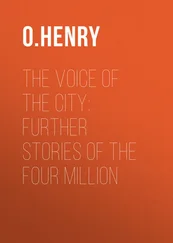Christopher Hibbert - Rome. The Biography of the City
Здесь есть возможность читать онлайн «Christopher Hibbert - Rome. The Biography of the City» весь текст электронной книги совершенно бесплатно (целиком полную версию без сокращений). В некоторых случаях можно слушать аудио, скачать через торрент в формате fb2 и присутствует краткое содержание. Жанр: Культурология, Искусство и Дизайн, на английском языке. Описание произведения, (предисловие) а так же отзывы посетителей доступны на портале библиотеки ЛибКат.
- Название:Rome. The Biography of the City
- Автор:
- Жанр:
- Год:неизвестен
- ISBN:нет данных
- Рейтинг книги:3 / 5. Голосов: 1
-
Избранное:Добавить в избранное
- Отзывы:
-
Ваша оценка:
- 60
- 1
- 2
- 3
- 4
- 5
Rome. The Biography of the City: краткое содержание, описание и аннотация
Предлагаем к чтению аннотацию, описание, краткое содержание или предисловие (зависит от того, что написал сам автор книги «Rome. The Biography of the City»). Если вы не нашли необходимую информацию о книге — напишите в комментариях, мы постараемся отыскать её.
Rome. The Biography of the City — читать онлайн бесплатно полную книгу (весь текст) целиком
Ниже представлен текст книги, разбитый по страницам. Система сохранения места последней прочитанной страницы, позволяет с удобством читать онлайн бесплатно книгу «Rome. The Biography of the City», без необходимости каждый раз заново искать на чём Вы остановились. Поставьте закладку, и сможете в любой момент перейти на страницу, на которой закончили чтение.
Интервал:
Закладка:
6. Completed in 1511, Agostino Chigi's villa was sold in 1580 to Cardinal Alessandro Farnese, a grandson of Pope Paul III, and is now known as the VILLA FARNESINA. It houses the Gabinetto Nazionale delle Stampe (an extensive collection of prints) and provides an elegant setting for receptions of the Accademia dei Lincei. Chigi, inordinately rich, adorned the villa with splendid works by Francesco Penni, Peruzzi, Sodoma, Sebastiano del Piombo, Giulio Romano, Giovanni da Udine and Raphael, whose lovely Galatea is to be seen in one of the loggias. Raphael designed far more work for Chigi than he completed. The reason, according to Vasari, was Raphael's passionate and distracting love-affair with the Fornarina , the baker's daughter. It seems that Chigi eventually allowed the girl to come to live with Raphael in the villa.
7. The COLLEGIO CAPRANICENSE and the adjoining PALAZZO CAPRANICA, in the Piazza Capranica, were completed in 1457. They were built for Cardinal Domenico Capranica, one of the most eminent cardinals appointed by Pope Martin V. The palace now contains a cinema.
8. The church of S. GIACOMO DEGLI SPAGNUOLI, in Piazza Navona, was the first to be built in Rome after the return of the popes from Avignon. It was founded by Bishop Alfonso Paradinas of Seville for his fellow-countrymen in the Jubilee Year of 1450.
9. Originally intended for the Dutch and Flemish as well as the German community in Rome, the church of S. MARIA DELL’ ANIMA in Via S. Maria dell' Anima near Piazza Navona was completed in 1523. The façade is attributed to Giuliano da Sangallo.
10. Adjoining the church of SS. APOSTOLI, the PALAZZO DEl SS. APOSTOLI was probably built in 1478 by Giuliano da Sangallo for Cardinal Giuliano della Rovere who became Pope Julius II.
11. The tenth-century Convent and Church of S. COSIMATO were restored in 1475.
11. RECOVERY AND REFORM
1. Begun in 1514, the PALAZZO FARNESE was designed by Antonio da Sangallo the younger. After the architect's death in 1546, he was succeeded by Michelangelo who was responsible for the upper storey of the building. The riverside wing and gardens were completed after Michelangelo's death by Giacomo della Porta in 1574. The palace was inherited in 1734 by the Infante Charles, son of Philip V of Spain, and his wife, Elizabeth Farnese. It afterwards became the Roman residence of the Bourbons of Naples, and early in the nineteenth century was occupied by the representative of Joachim Murat, Napoleon's marshal who became King of Naples in 1806. In 1871 the Italian government leased the palace to the French government for use as the French Embassy for one lira to be paid every ninety-nine years in exchange for the Hotel Galiffet in Paris. The vestibule and courtyard are as impressive as the façade. The first-floor gallery contains frescos of mythological subjects from Ovid's Metamorphoses by the Carracci brothers, Annibale and Agostino, assisted by Domenichino and Lanfranco. The nearby charming small Renaissance palace, the PICCOLA FARNESINA, which stands where the Corso widens into the Piazza S. Pantaleo, has no connection with the Farnese family. The lilies which feature in the palace's decorations are those of France, not of the Farnese whose own lilies decorate the fountains in the Piazza Farnese. The Piccola Farnesina was built to the designs of Antonio da Sangallo the younger for the family of the French prelate, Thomas Le Roy, who was granted the right to incorporate the fleur-de-lis into his coat of arms in recognition of his services in negotiating the concordat between François I and Pope Leo X. The palace was purchased by the Roman commune in 1887 and is now the MUSEO BARRACCO which houses a collection of ancient sculpture assembled by Barone Giovanni Barracco.
2. Created for Pope Paul III by Antonio da Sangallo the younger, the SALA REGIA was begun in 1540 but not completed until 1573. Intended for the reception of sovereigns and their diplomatic representatives, it was formed in a wing of the papal apartments which also housed the BORGIA APARTMENT and the STANZE OF RAPHAEL. The frescos of historical subjects are by Vasari, Lorenzo Sabattini, Francesco Salviati and the Zuccaro brothers.
3. The CAPPELLA PAOLINA was begun by Antonio da Sangallo the younger in 1540 and must have been completed before 1542 when Michelangelo began the two great frescos commissioned by Paul III for the side walls. These depict the conversion of St Paul (1542–5) and the crucifixion of St Peter (completed after 1549). They were the last pictorial works of the artist.
4. Michelangelo's LAST JUDGEMENT was widely condemned as being wholly unsuitable for a place of Christian worship. Paul IV (1555–9) referred to it as ‘a stew of nudes’. In the reign of Pius IV in 1564 Daniele da Volterra – thereafter known as il braghettone , the breeches-maker – was asked to make the figures more decent. Later over-painting was commissioned by Gregory XIII (1572–85) and Clement VIII (1592–1605). Biagio da Cesena, Pope Paul III's master of ceremonies, who criticized the nudity of the figures, is represented in the composition as Minos with the ears of an ass and a serpent around his loins. Other portraits are of Pietro Aretino (as St Bartholomew), Dante, Savonarola, Julius II and the artist's friend, Vittoria Colonna.
5. Michelangelo was at least sixty-three when he began work on the rebuilding of the piazza of the Capitol. He envisaged a new PIAZZA DEL CAMPIDOGLIO to be approached from the Piazza d'Aracoeli below by a ramp known as a CORDONATA from the ribs or cords originally stretched across such ways to give a foothold for animals. The architects who executed the design after Michelangelo's death were Giacomo della Porta who completed the PALAZZO DEI CONSERVATORI in 1568 and Girolamo Rainaldi who finished the PALAZZO NUOVO or CAPITOLINE MUSEUM, a replica of the Palazzo dei Conservatori, in 1655. These two architects collaborated in the rebuilding of the PALAZZO DEL SENATORE which dominates the piazza and is still the headquarters of the Commune of Rome. They departed slightly from Michelangelo's designs for the façade but retained his double staircase leading to the main entrance which had been built in 1550. Martino Longhi the elder raised the clock tower in 1578–82. The large statues of Castor and Pollux at the top of the Cordonata were found in the THEATRE OF POMPEY in the pontificate of Pius IV and were placed on the Capitol in 1583.
6. Michelangelo's PIETÀ, the only sculpture he ever signed, was commissioned by Cardinal Jean de Bilhères, the French ambassador, in 1498, when the artist was twenty-three.
7. Commissioned by Pius IV's predecessor, Paul IV, the CASINO DI PIO IV was begun in 1558 by Pirro Ligorio assisted by Salustio Peruzzi, son of Baldassare. The Casino is composed of two buildings, the Grande and Piccolo Casino, facing each other across an elliptical piazza which is reached by a double stairway through an arcade.
8. Situated in Piazza dei SS. Apostoli next to the PALAZZO COLONNA, the Church of SS. APOSTOLI was probably first built by Pope Pelagius I (556–61) and was successively restored by the Colonna Pope, Martin V (1417–31), by the della Rovere, Sixtus IV, and the Medici, Pius IV. It was almost entirely rebuilt during the pontificate of Clement XI (1700–1721) by Francesco Fontana and his father. The neo-classical façade is by Giuseppe Valadier; the portico by Baccio Pontelli. The Palazzo Colonna was built by Pope Martin V in about 1427 on the site of a castle belonging to his family. Decorations were complete by the time the palazzo was confiscated by the Borgia Pope Alexander VI. It was restored to the Colonnas by Pope Julius II. In 1620, when the palazzo still looked like a medieval fortress, Filippo Colonna decided to rebuild it with a gallery decorated with marble statues found in an adjoining villa. The wings around the courtyard and the loggia were reconstructed in 1730. The interior salons are richly painted and contain frescos by Pinturicchio, Poussin, Tempesta, il Pomarancio, Cavaliere d'Arpino and Cosmè Tura. Inside the palace is the famous Colonna Gallery founded by Cardinal Girolamo Colonna. This contains family portraits including one of Michelangelo's friend, Vittoria Colonna. There are also fine paintings by Poussin, Veronese and Annibale Carracci.
Читать дальшеИнтервал:
Закладка:
Похожие книги на «Rome. The Biography of the City»
Представляем Вашему вниманию похожие книги на «Rome. The Biography of the City» списком для выбора. Мы отобрали схожую по названию и смыслу литературу в надежде предоставить читателям больше вариантов отыскать новые, интересные, ещё непрочитанные произведения.
Обсуждение, отзывы о книге «Rome. The Biography of the City» и просто собственные мнения читателей. Оставьте ваши комментарии, напишите, что Вы думаете о произведении, его смысле или главных героях. Укажите что конкретно понравилось, а что нет, и почему Вы так считаете.
